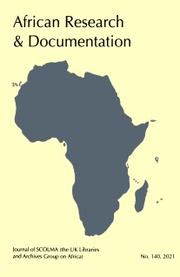Article contents
Repeat Landscape Photography, Historical Ecology and the Wonder of Digital Archives in Southern Africa
Published online by Cambridge University Press: 25 April 2022
Extract
Environmental history projects using repeat photography often involve the acquisition of large collections of historical and current images, matching those images for comparative analysis, and then cataloguing and archiving the imagery for long-term storage and later use (Webb et ah, 2010). When used in combination with other techniques, repeat photography is an excellent tool for documenting change (Gruell, 2010) and has been used in a variety of disciplines, including historical ecology, to determine changes in plant populations, soil erosion, climate trends and ecological processes to name a few. Historical photographs often provide greater temporal range to an analysis compared to, for example, satellite imagery and in many cases even aerial photography (Gruell, 2010).
- Type
- Research Article
- Information
- Copyright
- Copyright © International African Institute 2017
References
- 3
- Cited by


